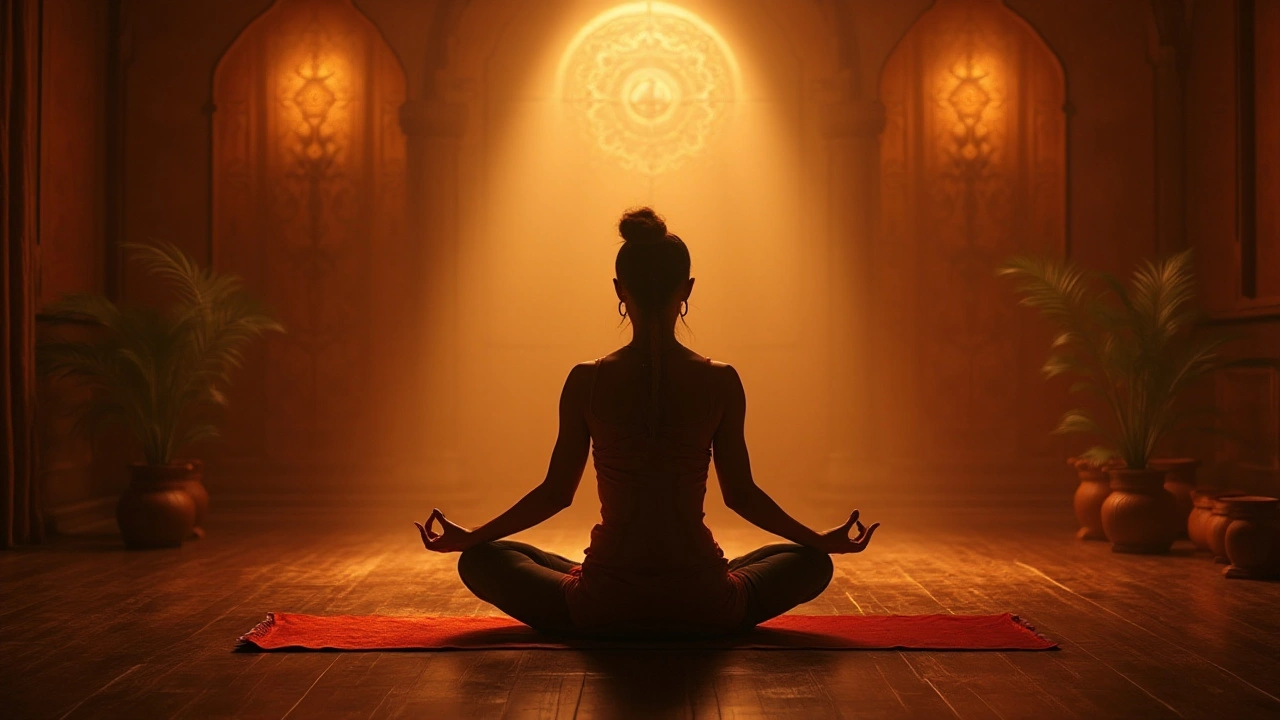In the quest for mental wellness, traditional therapy often takes center stage. Yet, those navigating the intricate pathways of mental health may wonder if there are other avenues worth exploring. What if the rhythmic strokes of a paintbrush, the quiet embrace of a forest, or the steady cadence of a morning jog offered more than just solace?
Venturing into these untapped resources can provide alternative routes to achieving emotional balance and clarity. It’s not just about finding substitutes but enriching the journey with diverse tools that nurture from within. By understanding and embracing these alternatives, one embarks on a path of holistic self-care that resonates deeply with individual needs and circumstances.
- Creative Arts as Therapy
- The Healing Power of Nature
- Mindfulness and Meditation
- Building Strong Social Connections
- The Role of Physical Activity
Creative Arts as Therapy
In recent years, the role of creative arts in fostering mental health has gained significant traction. Art therapy, music, dance, and writing are emerging as powerful tools in the mental wellness toolkit, each offering unique paths to healing and self-discovery. These arts engage the mind, body, and soul in ways that are often distinct from traditional therapy, allowing individuals to express feelings that might be difficult to verbalize. Harnessing creativity doesn't require one to be an artist or a musician; it's about exploring and engaging with the creative process, which can be profoundly healing. As people indulge in these practices, they often uncover deeper insights into their emotions, leading to a newfound understanding and management of their mental state.
The act of creating art is inherently therapeutic. When someone paints, sculpts, or draws, they are often able to articulate complex emotions visually, bypassing linguistic barriers. This form of therapy can help lessen symptoms of depression and anxiety by providing an outlet for expression free from judgement. A study by the American Art Therapy Association highlighted that engaging in visual arts can lower stress levels, increase self-awareness, and boost self-esteem. The canvas becomes a mirror for the soul, reflecting its innermost thoughts in a safe and supportive manner. This therapeutic process empowers individuals to take control of their mental health journey, at times discovering a voice they never knew they had.
Music therapy, too, has a profound effect on mental health. Whether through playing an instrument or simply listening, music can significantly alter mood and emotional states. It's well-documented that music has an inherent ability to stimulate the brain’s emotional centers. According to research published in the journal Frontiers in Psychology, music affects the autonomic nervous system, which is why it can soothe anxiety or elevate mood. By participating in music therapy, individuals can explore their emotional landscape, often finding respite and resonance in rhythms and melodies that words alone cannot convey. As Plato once remarked, "Music gives a soul to the universe, wings to the mind, flight to the imagination, and life to everything."
Dance movement therapy is another form of creative arts therapy that can be particularly liberating. By using movement as a form of self-expression, this therapy allows individuals to connect with their bodies, which can often be neglected in the face of mental struggles. The physical act of dancing releases endorphins, contributing to an uplifted mood and a sense of relief. Just like other creative expressions, dance helps in processing emotions, providing a physical outlet where verbal communication might fail. This embodiment of rhythm and expression serves as a reminder of the joy that can exist even amidst challenges, making it a valuable alternative or complement to traditional talking therapies.
Writing therapy, such as journaling, provides a different yet equally powerful method for managing mental health. This form of creative expression helps individuals organize their thoughts, reflect on their life experiences, and monitor symptoms and progress. Studies from Harvard Health have shown that expressive writing can lead to improvements in mood, well-being, and the ability to handle emotional trauma. By putting pen to paper, individuals create a structured space to explore their internal worlds. This practice can induce clarity and catharsis, offering insights that contribute to emotional literacy and resilience.
Ultimately, creative arts serve as a catalyst for emotional growth, therapy, and self-discovery. They reinforce the idea that healing isn't one-size-fits-all and that there are numerous paths to nurturing mental health. By engaging with these artistic modalities, individuals not only find creative outlets but also build a personal repertoire of coping strategies that can be drawn upon throughout life's various stages and phases.
The Healing Power of Nature
The allure of nature has beckoned humanity since the dawn of time, offering refuge, inspiration, and a profound sense of connection. The concept that nature itself can serve as a balm for the mind is not a novel idea, yet it has gained considerable traction in recent years as we rediscover ancient wisdom. In our modern world, saturated with digital noise and relentless pace, stepping into nature offers a refreshing respite, a kind of reset for the brain and soul. Scientific research into mental health therapy highlights that exposure to natural environments can reduce stress, lower blood pressure, and elevate mood significantly. Forest bathing, or shinrin-yoku, a practice born in Japan, has shown to enhance psychological well-being by encouraging individuals to immerse their senses fully in the natural world, away from the demands of daily life.
What makes nature a unique aspect of therapy alternatives is its ability to cater to diverse sensory experiences. The sights, sounds, and textures of natural settings can lead individuals to a state of mindfulness, an awareness of the present moment that is tied closely with reduced anxiety and increased happiness levels. The rustle of leaves in the wind, the gentle flowing of a stream, the earthy smell after a rain; these experiences engage our senses in ways that urban settings often cannot. Yet it’s not just about passive enjoyment; being active in nature, such as hiking or gardening, provides both physical exercise and mental rejuvenation, making it an excellent tool for emotional wellness.
Studies have illustrated interesting findings; for example, a study conducted by Stanford University found that walking in a green area can lead to decreased activity in a brain region linked to depression. This suggests the powerful potential of natural settings to alter our brain function positively. Indeed, as Rachel Carson once said, "Those who contemplate the beauty of the earth find reserves of strength that will endure as long as life lasts." These observations fuel the growing movement advocating for green spaces in urban planning to ensure that nature is accessible for mental health benefits.
Community initiatives often involve conservation, where engagement with nature dovetails with social interaction, making it an effective approach for those battling loneliness or isolation. The simple act of planting trees or tending to community gardens can foster a sense of purpose and belonging, contributing to improved mental state and social bonds. Importantly, therapy in natural settings isn’t bound by significant financial or logistical constraints, making it accessible to many. Individuals can begin with small doses of nature exposure, gradually integrating it into their daily routines to reap long-term benefits. Access to nature and sunlight boosts serotonin production, which is linked to feelings of well-being and happiness, corroborating the enhancement of emotional wellness.
In our pursuit of happiness and health, the role of nature is a testament to the simplicity that underlies human contentment. The shift towards incorporating the healing power of nature effectively into one's life can not only complement traditional self-care methods but serve as a potent stand-alone approach. As we continue exploring this ancient connection with the earth, we unravel new layers of understanding about ourselves and the living world that surrounds us.

Mindfulness and Meditation
Mindfulness and meditation have emerged as pivotal practices in contemporary mental health journeys, recognized for their profound impact on reducing stress and enhancing overall emotional well-being. At their core, these practices involve cultivating a present-focused awareness, where individuals learn to anchor themselves in the moment without judgment. This might sound simple, yet it profoundly alters perception and reaction to life's challenges, creating a buffer against anxiety and depression. Studies have shown that consistent practice can enhance not just mental clarity but physical health, lowering blood pressure and boosting immune function. In a world constantly buzzing with distractions, mindfulness acts as a sanctuary, a place to regroup and recharge.
For those new to these practices, starting with even five to ten minutes a day can yield noticeable benefits. The journey begins by finding a quiet space, sitting comfortably, and focusing on one's breath. This initial concentration on inhaling and exhaling gradually blooms into a deeper recognition of thoughts and sensations. Instead of pushing thoughts away, practitioners learn to observe them, allowing feelings to flow unsuppressed. This method cultivates a heightened sense of emotional resilience. As mindfulness practices solidify, individuals often notice improved attention spans and greater control over their emotional responses. A Carnegie Mellon study noted that just three days of mindfulness training could significantly impact stress reduction.
For those committed to nurturing their mental health, there are various forms of meditation to explore. These include guided meditation, where an instructor directs the session through visualizations or body scans, and mantra meditation, which involves repeating a particular word or phrase. Embracing these variations allows each person to find what resonates most deeply, tailoring the experience to fit their emotional landscape. A testament to its profound impact on human psyche, Jon Kabat-Zinn, a notable advocate of mindfulness, believes that, "Mindfulness is the awareness that arises from paying attention, on purpose, in the present moment, and non-judgmentally." His work, particularly in integrating these methods into clinical settings, underscores mindfulness's transformative potential on modern healthcare.
"Mindfulness is the awareness that arises from paying attention, on purpose, in the present moment, and non-judgmentally." — Jon Kabat-Zinn
For many, introducing structured meditation sessions can initially feel daunting. Yet, the digital age brings a wealth of resources right to our fingertips. Numerous apps offer guided sessions, promoting ease in embedding these practices into daily routines. From the soothing tones of Headspace to the scientific rigor behind Calm's offerings, users can explore a variety of approaches, finding what best fits their lifestyle. Joining local mindfulness groups or participating in online courses also provides a sense of community, an important element in sustaining long-term commitment. As with any skill, patience and persistence play key roles in developing mindfulness. Over time, those moments of peace morph into a natural state of being, one that impacts all facets of life.
Building Strong Social Connections
In today's rapidly evolving world, fostering strong social connections is more important than ever. Humans, by nature, are social beings, hardwired to connect, share, and grow through interactions. However, the digital age, with its penchant for virtual living, often throws a wrench into the dynamics of real human relationships. With an increasing number of people experiencing loneliness, understanding the essential role that social connections play in mental health and well-being becomes crucial. Studies have shown that quality relationships can significantly reduce stress levels, bolster self-esteem, and even prolong life. Interestingly, a study conducted by Harvard over 75 years indicates that close relationships, more than money or fame, are what keep people happy throughout their lives, explaining the 'good life' is built with social connections.
Yet, building these meaningful relationships takes intention and effort. It starts with reaching out and nurturing existing friendships, making time to engage in shared activities, and actively listening to each other. Modern life, with its focus on hustle and individual achievement, tends to sideline the softer aspects of human interaction, leading many to underestimate the true power of connection. Engaging in community activities, whether volunteering or attending local events, can also provide a sense of belonging and purpose. Joining clubs or groups centered around common interests is another excellent way to break the ice and develop genuine friendships.
"Loneliness and social isolation can be as damaging to health as smoking 15 cigarettes a day," says Julianne Holt-Lunstad, professor of psychology at Brigham Young University, highlighting the profound impact of social interaction.
Social connections are not just about having people around but about experiencing a sense of belonging and acceptance. To cultivate such connections, transparency in communication and empathy take precedence, where vulnerabilities are shared and understood without judgment. In many cultures, family ties play an integral role; however, as the world becomes increasingly globalized, friends often assume the mantle of family. This shift emphasizes the choice we hold in surrounding ourselves with nurturing and positive relationships. For those more introverted, even maintaining a few deep connections can have significant mental health benefits. Regularly checking in on friends and family, sharing meals, or even simple gestures like sending a message or making a call can strengthen these bonds profoundly.

The Role of Physical Activity
Physical activity is often hailed as a cornerstone of good mental health. Engaging in regular exercise can serve as an effective tool for improving emotional and psychological wellbeing. Studies have revealed that physical activity releases endorphins, which are chemicals in the brain that act as natural painkillers and mood elevators. This is why many people report feeling a sense of exhilaration after participating in an exercise session. But the benefits of physical activity extend beyond just biochemical responses.
Research highlights that individuals who maintain a consistent workout routine often experience reduced levels of anxiety and depression. This is not merely due to the physiological changes occurring in their bodies. Exercising can provide individuals with a clear sense of purpose and achievement, which are essential components of mental wellness. When one sets and reaches new physical milestones, it bolsters self-esteem and a sense of competence. Moreover, participating in group activities, such as a local soccer team or a gym class, not only promotes physical health but also fosters social connections, which are crucial for emotional support.
The impact of physical activity is diverse and profound. Aerobic exercises, such as running, swimming, or cycling, have been shown to be particularly effective in reducing stress. These activities increase cardiovascular fitness and decrease levels of cortical stress hormones, such as adrenaline and cortisol. Yoga and tai chi, on the other hand, combine physical movement with mental focus and can enhance mental clarity and calm. These activities teach individuals how to harmonize body and mind, often leading to improved self-awareness and emotional regulation.
“Exercise is really for the brain, not the body. It affects mood, vitality, alertness, and feelings of wellbeing,” says John Ratey, a Harvard psychiatrist.
Moreover, the relationship between physical activity and sleep quality cannot be overlooked. Exercise raises your core body temperature, and the post-exercise drop in temperature may promote falling asleep. Additionally, physical activity reduces insomnia by decreasing arousal, anxiety, and depressive symptoms. When an individual experiences restful and restorative sleep, they are more likely to maintain a positive outlook and cope effectively with stressors. Although exercise is not a direct cure for mental health issues, it's a powerful adjunct to traditional mental health treatments.
A closer look at how physical activity impacts the brain also reveals fascinating insights. Regular exercise leads to increased neural growth, reduced inflammation, and new activity patterns that promote feelings of calm. High-intensity workouts can bring about these benefits swiftly, while moderate-intensity activities like walking or gardening consistently support long-term improvements in mental health. It’s crucial, though, to find a balance that works for each individual, as this ensures that the engagement is sustainable and enjoyable.
In summary, auguring one's life with a healthy dose of exercise undeniably influences both the emotional wellness and the physical body. As more people search for therapy alternatives, exploring and incorporating physical activity into daily routines can offer substantial benefits. It's all about finding that perfect mix that not only fits your lifestyle but also sparks joy and fulfillment.





